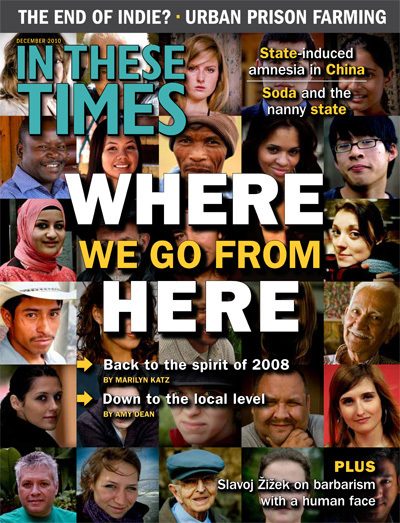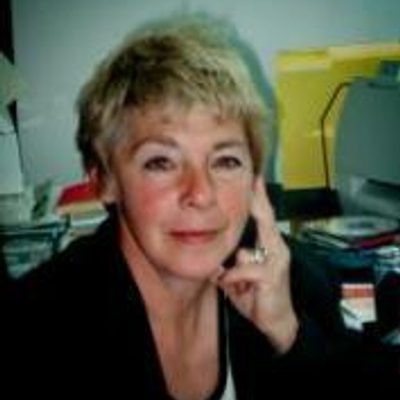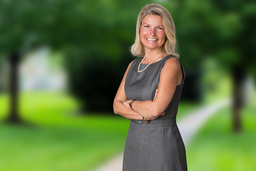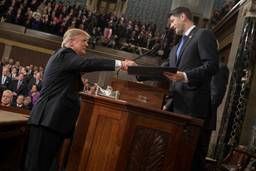What We Lost After We Won in 2008
An anti-war activist explains what the Democratic establishment fails to understand.
Marilyn Katz
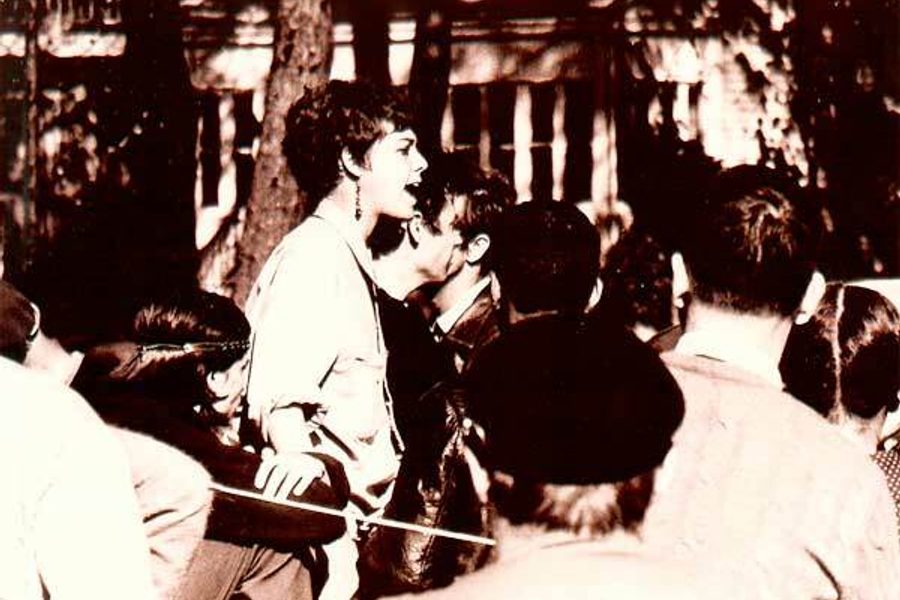
On a sleepy Sunday in September 2002, I was awakened by a call from Bettylu Saltzman, a longtime progressive activist and fundraiser in Chicago, who, disturbed by a dinner conversation the night before, asked, “What are we going to do about this war that Bush is going to lead us into in Iraq?” Awakened also from nearly a decade-long slumber in which there were no mass demonstrations, we realized that if we didn’t do something, it was more than likely that no one would. Gleaning names from our phone books, we called together a small meeting of about 15 people from various former alliances – Business and Professional People for the Public Interest (BPI), Students for a Democratic Society (SDS) and the Harold Washington coalition.
It was only a year after the terrorist attacks on Washington and New York, and the repression in the country was palpable. John Poindexter, director of the Pentagon’s Total Information Awareness project, was rumored to be compiling a list of subversives. It was a scary time – and even among these long-tested activists, there was apprehension: What would be the repercussions of our acts? One year after 9/11, would people really speak out? What if no one came?
Drawing on lessons from my activist past, I argued that we had to take a public stand. The first demonstrations during the ’60s drew only 50 people before there were 1 million; and the one thing I knew for sure was that if we did not claim the public space for dissent now, there would no longer be any space for dissent later. Even if we had to stand alone, we had to stand.
With a sense of urgency we agreed to call for a demonstration at the city’s Federal Plaza. Each of us turned to our email lists, our contacts from far and wide. We reached out to various groups, scraped together the money for an ad, created posters and fliers. And we called every public official we knew, inviting them to join us. We didn’t know who would come and stand with us, either on the half-donated stage or in the massive plaza, but we were ready for whatever was to come.
Ten days later, on October 2, to our great pleasure and somewhat to our surprise, nearly 3,000 people joined us at the plaza. They were young, old, friends and strangers, and in stark contrast to 1966, 1967 and 1968, the response from the surrounding crowd was really great. The highest-ranking public official who showed up was a little-known politician from the south side of Chicago, a friend of mine and a better friend of Bettylu’s – State Senator Barack Obama. He made a speech that had heads turning and asking, “Who is this guy?”
From that first crowd of 3,000, opposition to the war followed a much quicker trajectory than did opposition to the war in Vietnam. By March 2003, millions of people across the United States had taken to the streets to say no to the war. For a moment we felt powerful.
But despite the fastest-growing anti-war movement in the nation’s history, despite the opposition of more than 121 city councils across the nation, Bush invaded. People were outraged over and over again, yet by 2005, the protest movement had stopped growing; the demonstrations were getting smaller and smaller. There were several contributing factors.
First, the generation of young people that had populated those demonstrations was different from the one in the ’60s. They were not threatened by a draft; rather they were burdened by college loans and job insecurity; and they lacked any real counterculture. There was none of the playful space that my friends and I had growing up in, none of the feeling that if you didn’t get a job this year, you would just get a job next year.
Second, unlike the Vietnam years, there was no palpable response to our protests from the federal government. The movement got little serious attention from the news media and partly as a result (or perhaps learning from the ’60s) George W. Bush refused to take us seriously.
On top of that there was a complete lack of leadership from the Democratic Party. Sen. Hillary Clinton (D-N.Y.), at that point the party’s standard-bearer, had supported the resolution that enabled Bush to go forward with the war. And so Republicans were able to frame the issue as one of “supporting the troops,” while the Democratic leadership failed to frame the issue at all.
As a consequence, people became discouraged and drifted away from the demonstrations, convinced they had no chance of making an impact.
Hope on the horizon
In 2007, as Barack Obama’s campaign for president began to take shape, people – young people in particular – felt that since they weren’t going to influence power, they might as well take power. Activists, many of whom had become disengaged from the protest movement, now shifted their focus onto the election to the presidency of someone they believed reflected their own politics, someone they thought would end the war and would be a force for peace.
To correctly understand the 2008 election, it is important to recognize that rather than creating a movement, the Obama campaign created a structure to which the anti-war movement – youth in particular but also others – could attach. Obama, as he would be the first to admit, did not organize the movement; the movement organized to attach itself to the structure of his campaign. This is a vital distinction that nobody quite gets, whether they are media pundits, political consultants and polling gurus, or staffers in the White House and at the Democratic National Committee (DNC).
The months leading up to the election were heady times, as not only anti-war activists but activists in every realm – environment, community development, women’s issues and more – attached themselves to the structure of the campaign, invigorating the same old Democratic base with new constituencies, who for the most part didn’t really give “electoral politics” a thought. After the election, perhaps from never really understanding the process nor understanding the empowering and progressive impact of collective action, the Obama administration and the DNC let that grassroots structure wither. The White House was prohibited from using any of the campaign support lists for political purposes, and the DNC used the lists almost exclusively for fundraising purposes, too often targeting those who gave dollars rather than time.
Ultimately, the DNC and White House political operatives missed the point: that when people are acting together they feel empowered. By failing to maintain group activities and infrastructure, the Democrats left people feeling atomized, disempowered and ultimately paralyzed.
Consequently, when the president needed grassroots support he had no way to hook into, educate or activate any of the non-Democratic Party activists or issue groups, except for those that lived in Washington.
Yes, the DNC has lists of people who donate to Democrats, who are Democratic activists – it always had such lists. What was unique about the Obama campaign was that people who were not self-identified Democratic activists found a momentary home with the Obama campaign.
Remember 2008? In Chicago everyone you knew was spending their weekends going door to door in nearby Wisconsin or Indiana. That’s not what happened this year, because the Democrats made four critical mistakes during the run-up to the midterms.
First, they left people alone in their isolation. People who feel connected to a center of activity and to each other feel empowered and hopeful. People left to suffer the vicissitudes of life alone feel scared.
Second, they relied on 2008 vote counts to organize and predict outcomes for today. Their strategy has been to simply “round up those who voted in 2008” – misunderstanding that the margin of victory did not come from “regular Democrats” but from those “independents who saw a reflection of and hope for themselves in Obama.”
Voting is an action that comes from a motivation. It is stirred by something that you want. If you leave people disorganized and not inspired by an agenda or issues, or not understanding of what the strategy is, they are not going to vote.
Third, they mistook technology for the thing itself. TV is a tool. The Internet is a tool – and most effective when it allows people to take an action in response to it. The best method to do that is providing people with a response that requires collective action. The most interesting thing about Obama’s use of the Internet – and the campaign didn’t recognize this – is not just that it allowed them to raise a ton of money. Rather, through its connectivity it allowed people to accelerate the process of organizing groups on the ground. So the impact was translated from the Internet to the ground. And that’s been totally absent in the past two years. Voting is a function of people’s activity and enthusiasm. It doesn’t exist in the middle of nowhere. It doesn’t float in the sky.
The Obama administration’s fourth critical mistake was its bad political positioning – putting Obama in the role of mediator rather than champion. Right after the Democrats lost the Massachusetts Senate seat long held by the late Ted Kennedy, I was at a dinner in New York with about 25 policy people, mayors, chiefs of police and experts from the Kennedy School at Harvard. I asked: “How many of you can name five things in the healthcare platform?” One person could name three and he was a doctor from Chicago who was also a social activist.
The point is that even among the most concerned, ardent, thoughtful activists, there was no clear understanding of a message from Obama. I believe that came not out of incompetence, though it might have appeared so, but out of the decision to take one part of Obama’s political persona during the campaign, i.e. The Great Mediator, and make that the cutting edge of his presidency rather than advancing a progressive agenda.
During the 2008 campaign people weren’t organizing to elect a mediator. They were organizing to elect a leader – someone whom they trusted, someone whose answers to the immediate situation came from a wellspring of principles applied to current realities and issues. The choice of the mediator as Obama’s persona was a big mistake.
And because nobody in the country can tell you what’s in the healthcare package, people are having a hard time fighting for what they don’t know.
Toward a better future
Two years after an election that saw record voter turnout and engaged huge numbers of people who showed up at the polls for the first time, a sense of anomie and disconnection has replaced the euphoria of November 2008.
I see two critical actions that would reverse the situation.
First, there needs to be a recalibration of the presidency and message from the White House. People need to know what Obama thinks, why he does what he does, and how they can help. This is not possible by using only “mediated sources” (i.e. the major media). He/they need to speak directly to people about what the administration is doing, why they are doing what they do, and how all of us can be of use. The administration – in each department of government, as well as through the DNC – needs to motivate as well as activate us.
Second, the road to change runs not through any street in Washington but through the streets of our communities. There needs to be a re-organization on the ground by people. We must understand that Obama can’t do it for us; like all leaders, the president needs a sea in which to swim. We must build the national grassroots vehicle that Obama for America and Organizing for America could have been. This organization must be broad enough in scope to develop and promote a progressive agenda, and it should allow all types of involvement – whether online or in person, occasional or constant.
The core of the new organization could be a web of activists in every state – not just blue states and not only Democratic Party members – enfolding the thousands of Americans engaged each day on issues of neighborhood, health and climate – the stuff that life is made of.
Crucially, the organization’s members would not only articulate a progressive agenda and interact with congressional leaders on the ground but also be broad and creative enough in their thinking to involve the ordinary, everyday people who found both meaning and community in 2008. I believe these people yearn for this today, if for no reason other than to once again feel the sense of “Yes we can!” that only comes from the transformative power of collective action.
In 2008 the American people elected a great leader who had an agenda that was not necessarily theirs or mine, but it was a progressive agenda, one that would frame the debate for the next four years. In the campaign they felt the power of collective action – a sense that they could be a part of and make history. It is that sense – both of agenda and of the power of collective action, not of dependency on a great man but on the interdependency of man and movement – that has foundered. If the movement and the man are to prevail, that collective purpose must be found again.
